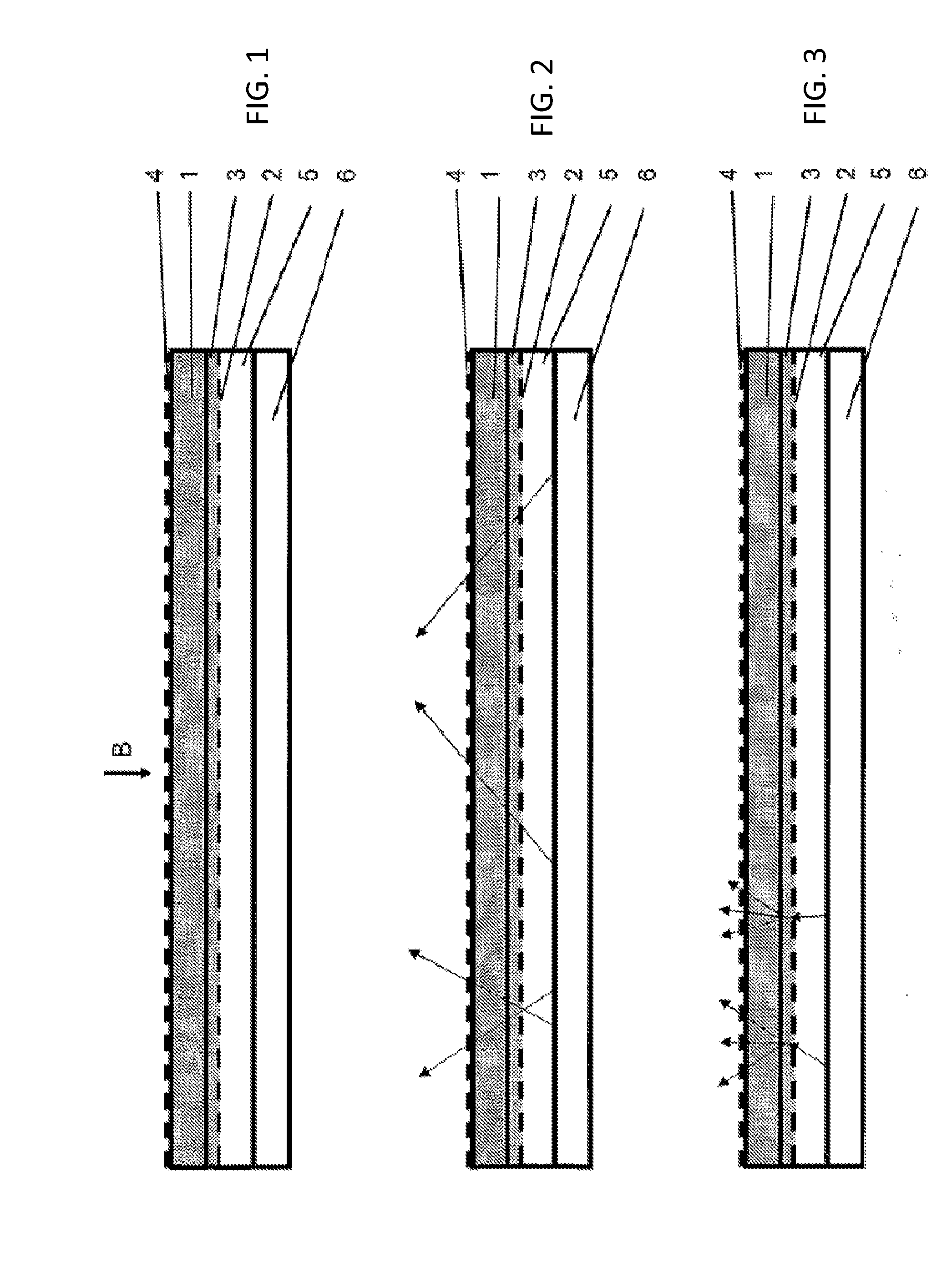Assembly for the selective three-dimensional or two-dimensional representation of images
- Summary
- Abstract
- Description
- Claims
- Application Information
AI Technical Summary
Benefits of technology
Problems solved by technology
Method used
Image
Examples
Embodiment Construction
[0043]FIG. 1 illustrates the assembly according to the invention for the selective three-dimensional or two-dimensional representation of images, as a schematic diagram. The assembly comprises an image replicating device 1 with a multiplicity of image elements which in a predetermined co-ordination represent information from one or several aspects of a scene / of an object / of a text, a filter array 2 located behind the image replicating device 1, in the line of sight B of a viewer, which comprises a multiplicity of wavelength filter elements that are permeable to specific wavelength ranges, a first scattering layer 3 located behind the image replicating device 1 and in front of the filter array 2, in the line of sight B of the viewer, which can be selectively switched between a transparent state and a dispersing state, a second scattering layer 4 positioned in front of and directly on the image replicating device 1, in the line of sight of the viewer, which preferably corresponds to a...
PUM
 Login to view more
Login to view more Abstract
Description
Claims
Application Information
 Login to view more
Login to view more - R&D Engineer
- R&D Manager
- IP Professional
- Industry Leading Data Capabilities
- Powerful AI technology
- Patent DNA Extraction
Browse by: Latest US Patents, China's latest patents, Technical Efficacy Thesaurus, Application Domain, Technology Topic.
© 2024 PatSnap. All rights reserved.Legal|Privacy policy|Modern Slavery Act Transparency Statement|Sitemap


